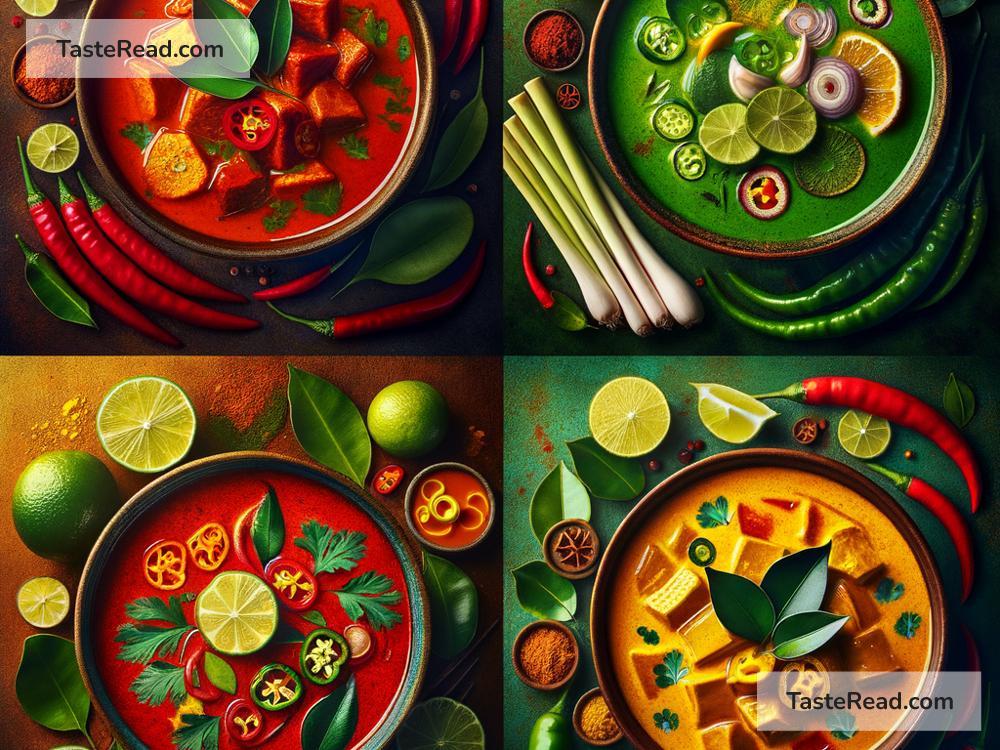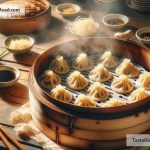Exploring the Regional Variations of Thai Curries: A Culinary Journey
Thai cuisine is celebrated worldwide not only for its rich flavors but also for its diversity. Among the most iconic dishes from Thailand are its curries, which are as varied as the country’s regions. These curries offer a delicious glimpse into the cultural and geographical diversity of Thailand, each region tailoring its curry recipes to reflect its unique identity, climate, and available ingredients. Join us as we embark on a culinary journey to explore the regional variations of Thai curries.
The North: Aromatic and Mild
Starting in the northern part of Thailand, the curries here take on a milder and more aromatic profile compared to their southern counterparts. The cooler climate of this region influences the availability of certain ingredients, leading to the use of local herbs, freshwater fish, and meats like chicken and pork.
One of the standout northern curries is Khao Soi. This curry is a delightful blend of coconut milk, turmeric, and shallots, poured over soft egg noodles and topped with crispy noodles. The dish is often served with pickled mustard greens, shallots, lime, and ground chillies fried in oil, allowing diners to adjust the flavor to their preference. Khao Soi is a comforting dish, reflecting the gentle nature of the Northern Thai people and their landscape.
The Northeast: Bold and Hearty
Moving to the Northeast, or Isan, the curries become bolder and more robust. This region is known for its rural landscapes, and the food here is hearty, reflecting the lifestyle of its inhabitants. The curries of the Northeast often forego coconut milk, making them less rich but no less flavorful.
A popular curry from this region is Jungle Curry, or Gaeng Pa. This dish is a fiery concoction that includes wild game or fish, eggplant, Thai basil, and a variety of herbs and spices. It’s a clear curry, lacking coconut milk, which allows the bold flavors of the herbs and meat to shine through. Jungle Curry epitomizes the rugged and spirited nature of Northeast Thailand.
The Central Plains: A Melting Pot of Flavors
The Central region of Thailand, home to Bangkok, is where Thai curry traditions merge. This area is a melting pot of flavors, influenced by the variety of ingredients available through trade and the cosmopolitan nature of the capital city. Curries here are varied, with a balance of sweet, salty, sour, and spicy flavors.
Green Curry, or Gaeng Keow Wan, is perhaps the most famous Thai curry and a classic example of Central Thai curry. It gets its vibrant color from green chillies and is made with coconut milk, which adds a creamy sweetness to counter the heat. Ingredients like Thai basil, bamboo shoots, and chicken or beef are common. Green Curry represents the harmonious blend of flavors that typify Central Thai cuisine.
The South: Spicy and Intense
As we move to the Southern part of Thailand, curries become more intense and spicy, reflecting the fiery spirit of its people. The South is surrounded by the sea, so it’s no surprise that seafood often features prominently in its curry dishes.
Massaman Curry, although influenced by Persian cuisine, has been fully embraced and adapted by Southern Thailand. This rich, decadent curry includes coconut milk, potatoes, onions, and roasted peanuts, usually served with beef or chicken. Spices like cinnamon, star anise, and cardamom give Massaman Curry a distinctive taste that sets it apart. It’s a perfect example of the complex and layered flavors of Southern Thai curries.
Another notable Southern curry is Panang Curry, thicker and sweeter than other Thai curries but with a distinct kick. It typically includes beef, although pork or chicken can also be used, and is characterized by its red color from the chilli paste. Kaffir lime leaves are a key ingredient, adding a uniquely Thai aroma and taste.
Conclusion: A Country United by Curries
Across the diverse landscapes of Thailand, curries serve as a culinary thread that weaves through the fabric of Thai culture. From the mild and aromatic curries of the North to the fiery and potent concoctions of the South, each regional variation of Thai curry offers a taste of its area’s history, geography, and lifestyle.
Exploring these regional differences reveals the complexity and richness of Thai cuisine, reminding us that food is not just sustenance but a deep expression of cultural identity. Whether it’s the comforting Khao Soi of the North, the robust Jungle Curry of the Northeast, the balanced Green Curry of the Central region, or the intense Massaman and Panang curries of the South, each dish tells a story. A story of traditions passed down through generations, of communities coming together, and of a nation united by its love for curry. So, the next time you enjoy a Thai curry, remember, you’re not just tasting a dish; you’re experiencing a piece of Thailand.


